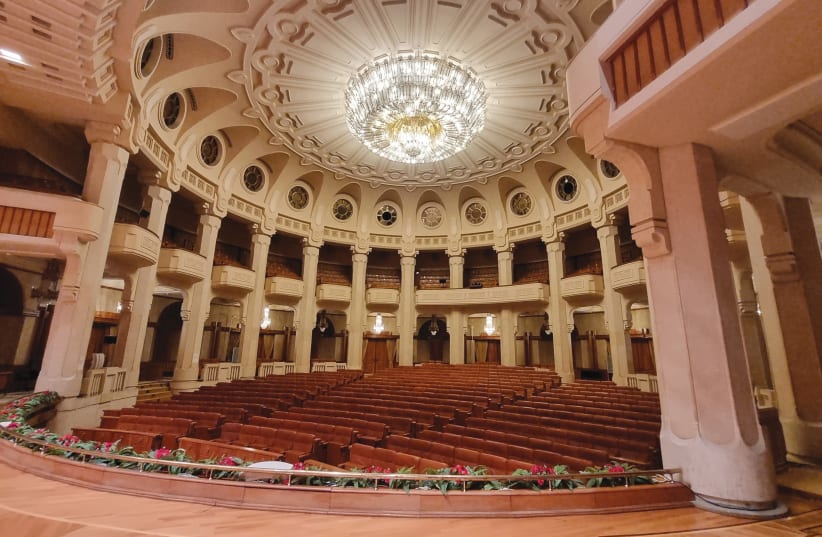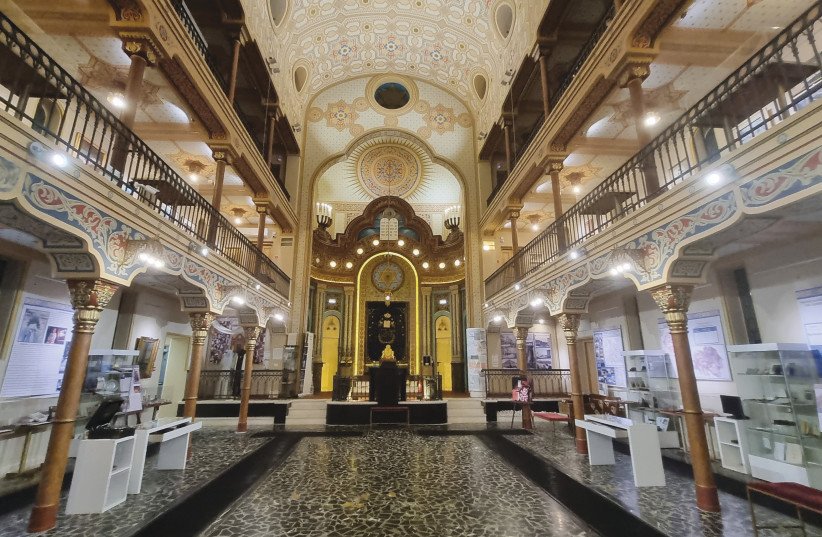Around 120 years ago, people began referring to Bucharest as “Little Paris.” Not only was the Romanian capital’s architecture decidedly French but many spoke French, the rich wore the latest Parisienne haute couture and would send their offspring to the finest institutes of learning in gay Paris.
Much of that architecture stands proud today. Have your camera ready en route from Henri Coanda International Airport to downtown Bucharest as about 15 minutes into the journey you will pass the Arcul de Triumf, which looks remarkably similar to the triumphant arch at the top of Paris’ Avenue des Champs-Élysées.
The grandiose architecture was taken to the nth degree by the country’s erstwhile communist leader Nicolae Ceausescu. His piece de resistance, the Palace of Parliament, is the building to see in town, only eclipsed in size by the Pentagon. The building’s stats are off the charts in global terms: it’s the biggest this, the heaviest that and the longest the other. Curtains in the palace rise to a whopping 16 meters – imagine the dry-cleaning bill.
In 1989, protestors shot Ceausescu and his wife the reportedly real leader Elena before construction was completed. By the time of his execution, at least 20,000 workers had been slaving (a term used advisedly) on the project for five years. Since 1994, the structure has housed Romanian democratic institutions with both houses of parliament sitting in it for the last 18 years.
As in many Eastern-European capitals, modern Bucharest is a mix of pre-communism, communism and post-communism. That means historic palatial residences smooch up to brutalist concrete megaliths that abut shining modern towers. All shout something about Bucharest’s past, present and what lies ahead.
Bucharest’s Jewish past is celebrated by its small community of maybe 3,000 but also by the city’s architects, who have big plans for rejuvenating the city-center Jewish neighborhood and its heritage. That’s great news for the district, which has some exquisite historical sites but whose streets show signs of some neglect.
The buildings are beautiful
But the insides of the Jewish buildings are magnificent. The Choral Temple synagogue is a must. The Enderle and Freiwald-designed building was constructed in the mid-1860s. It’s based on Vienna’s Leopoldstadt-Tempelgasse Great Synagogue, built a decade earlier. Among its remarkable features are the ladies’ galleries. Yes, in the plural because there are two floors of seating for women, perhaps giving the feeling of an opera house. And while this is an orthodox synagogue there are tales of disputes over reforms, such as the addition of an organ with a non-Jewish organist suggested as a compromise to prevent the breaching of Sabbath laws.
Services are still held in the Temple; however, a dwindling population meant prayers ceased in the Unirea Sfanta temple in 1966. In 1977, the building reopened as a museum and today, houses the Dr. Nicolae Cajal Museum of Jewish History and Culture in Romania. The curators take full advantage of every inch of space in the synagogue, which also has a two-tiered gallery.
The exhibits tell the story of Romania’s Jewish past, including a coin that dates back the best part of two millennia. The section on the Holocaust is small but sobering, recalling individual stories of a few of the 400,000 killed – around half of the pre-war population. Perhaps unexpectedly, 111 Romanian synagogues survived the war. A handful are still active, while some others are being lovingly restored by Jews and non-Jews alike.
A LIVING tribute to Bucharest’s Jewish heyday is the very active State Jewish Theater, which performs more than a quarter of its productions in Yiddish. It is the oldest Yiddish-language theater with uninterrupted activity in the world and hosts the annual International Yiddish Theatre Festival. The parliament adopted a law in 2017 by which May 30 became the National Yiddish Language and Theatre Day in Romania.
Beyond the Jewish world, Bucharest is a thriving capital of the arts with a slew of impressive performing arts venues, like the Opera Nationala Bucuresti and the Romanian Athenaeum, behind which lie two top-class restaurants run by Israeli Joseph Hadad, who is the principal judge on Romanian Masterchef. Hadad happily cooks kosher fish in tinfoil to satisfy the kashrut laws of observant Jews in his non-kosher Caju restaurant.
Museums and galleries also abound, such as the National Museum of Contemporary Art and its excellent formerly-private Zambaccian collection, and the fascinating Filipescu-Cesianu House, which showcases urban anthropology. The latter is one of 12 museums that comprise The Bucharest Municipality Museum.
But it’s not all culture. Just beyond the airport lies a water palace that is hard to better: Therme Bucharest. You’ve been sitting at the bar in the middle of the indoor swimming pool for long enough and want a change of scenery. Use the revolving door within the pool and head for the outdoor jacuzzi with mist rising to the skies in the winter air. Some 16 slides – really long ones – will keep the kids happy for hours, with regular entertainment slots for young and old alike. You won’t believe the variety of saunas and treatment rooms on offer, in addition to a great mix of sit-down restaurants and fast-food options.
There are parts of the city that need a facelift – something City Hall is working hard to implement – such as the gaudy heart of the Old Town, a tourist trap that offers little for the more discerning traveler. Yet just yards away is the magnificent Marmorosch Bucharest, worth a peek even if you can’t afford to stay in the hotel.
The hotel, perhaps, sums up Bucharest, a classy building that housed Romania’s most influential bank during the late 19th Century. It had been somewhat neglected until latterly it was restored and converted into a wonderful hotel with a magnificent facade. It represents what Bucharest wants to be.
The city is well on the path to shaking off decades of political and social abuse, becoming a major draw for tourists from around the world, and perhaps most surprisingly, Bucharest is a Mecca for Israelis. Fully 14% of all tourists to Bucharest hail from Israel, making us number one. Hardly surprising then, that Bucharest is committed to enshrining its Jewish past in its tourism future.
The writers are the hosts of The Jerusalem Post travel podcast – www.jpost.com/podcast/travel-edition.

